
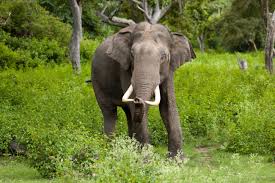
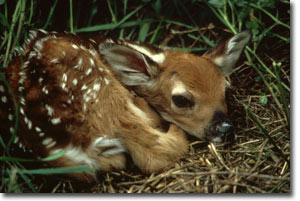
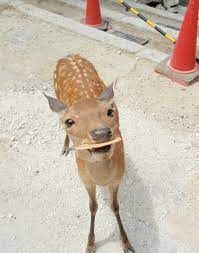
Deers have about 50 species such as the reindeer, red deer, elk, white-tailed deer, and moose among others. Deer were originally found in continents such as Asia, North America, Northern Africa, Europe, and South America, the were, later on, take to countries like the Republic of South Africa, New Zealand, and Australia.Their environment is mostly green and woody, although some prefer tundra and grassland biomes. The sizes of deer vary as some are humongous while others are very tiny. The Southern Pudu weighs about 9 KG goes as far as 14 inches tall when at full maturity making it the smallest of the family.
Deer are at a lot of risk of death in their habitat because of the environmental challenges and their numerous predators. Still, a deer can live up to between 10 to 25 years, varying from one species to another. Deer eat plants, leaves, fruits, nuts, grass, and acorns. So they are technically herbivores.
With its graceful antlers and gentle gaze, the deer symbolizes calm, inner peace, and a return to nature.The deer symbolism is strongly connected to nature and its rhythms. This animals demeanor is gentle and nurturing, yet it is also agile and swift.


There are three different species of elephants, the African Savannah elephant, the African Forest elephant and the Asian elephant. Elephants are known for their large ears, tusks made of ivory and their trunks.You can tell a lot about an elephant by looking at their tusks! Elephant tusks never stop growing, so enormous tusks can be a sign of an old elephant. Both male and female African elephants grow tusks, but only male Asian elephants grow them. A tusk-less adult elephant is likely to be a female Asian elephant. These magnificent mammals spend between 12 to 18 hours eating grass, plants and fruit every single day. They use their long trunks to smell their food and lift it up into their mouth.
Sadly, elephants are in trouble. Many are killed by humans for their ivory tusks, because theyve come into conflict with communities or simply for sport. There are far fewer Asian elephants than there are African elephants. Asian elephants also face threats from tourist attractions where people pay to ride on their backs or watch them paint pictures using their trunks.
In many cultures, elephants are featured as symbols of power, wisdom, inspiration, and reverence. Their strength is legendary throughout history as well as mythology. Even today, they still carry this powerful connotation with them.
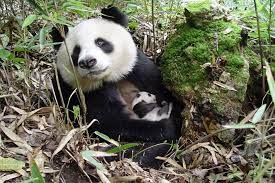
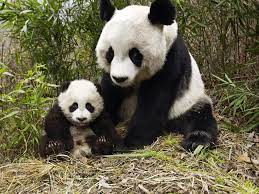
Giant pandas (often referred to as simply pandas) are black and white bears. In the wild, they are found in thick bamboo forests, high up in the mountains of central China. These magnificent mammals are omnivores. But whilst pandas will occasionally eat small animals and fish, bamboo counts for 99 percent of their diet. Giant pandas grow to between 1.2m and 1.5m, and weigh between 75kg and 135kg. Scientists arent sure how long pandas live in the wild, but in captivity they live to be around 30 years old. Baby pandas are born pink and measure about 15cm,they are also born blind and only open their eyes six to eight weeks after birth.
The greatest threat to wild giant pandas is habitat loss.Climate change threatens the giant pandas habitat. Smithsonian scientists and colleagues are working to restore bamboo forests in the Qinling mountains of China.
They dont cause harm to any other animals unless they are being annoyed by other creatures. At times, they are aggressive and fierce. However, being full of love and lazy and eating bamboo all day is their true nature.Pandas have very important significance in Chinese culture. Though they have a gentle temperament, they are known to be as strong as tigers according to Chinese belief. It is because they can find food for themselves, they can climb and swim, and withstand cold and harsh weather conditions.Pandas are the symbol of peace, luck, and harmony. They nurture themselves with love and care.